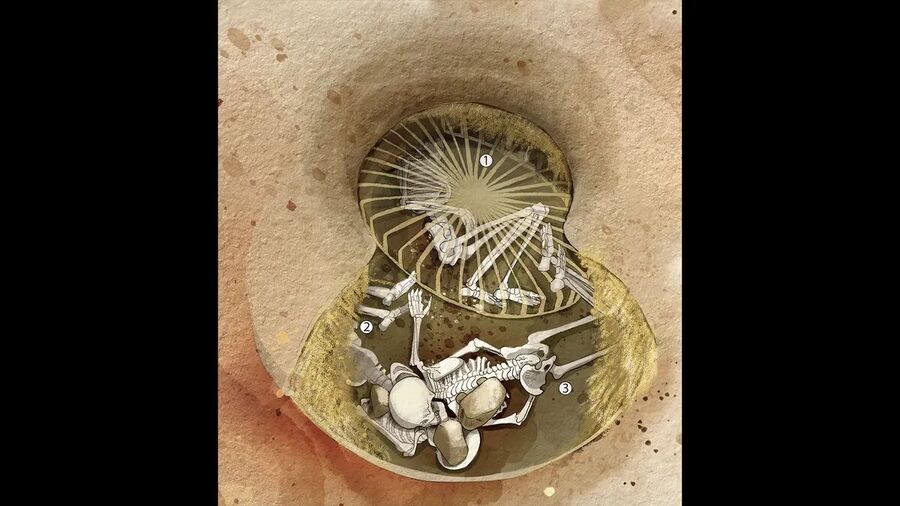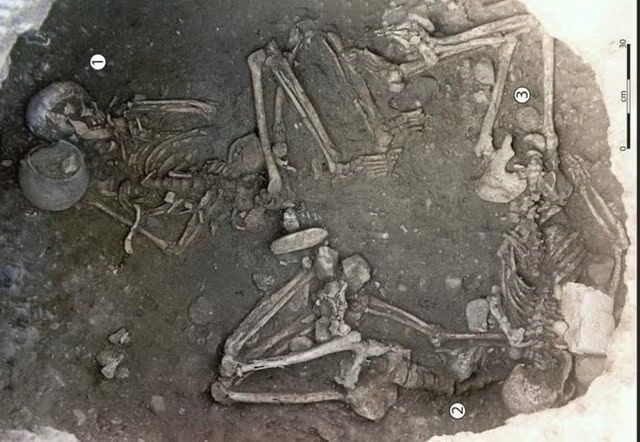
The murder of sacrificial victims by "incaprettamento" — tying their neck to their legs bent behind their back, so that they effectively strangled themselves — seems to have been a tradition across much of Neolithic Europe.
The study follows a reevaluation of an old tomb found in southern France's Saint-Paul-Trois-Châteaux, close to Avignon, more than 20 years ago. Two women who were buried there approximately 5,500 years ago are buried in a tomb that resembles a silo, or pit used to store grain.
Researchers started by studying skeletons excavated at Saint-Paul-Trois-Châteaux, a Neolithic tomb. Three of the remains belonged to women that the team determined were forced into positions that caused them to asphyxiate; at least one of the women may have been buried alive.
The team then scoured existing studies for similar cases of unusual burial practices in Stone Age Europe with abnormally positioned bodies.
Archaeologists sought more evidence to ascertain whether the women's deaths, though clearly violent, were part of a larger Neolithic tradition that was probably connected to agricultural practices.

Further investigation found that squeezing the breath out of people was already a ritualized form of homicide for 2,000 years by the time the Rhône Valley victims died between 6,000 and 5,500 years ago.
The study highlights the presence of agricultural symbolism surrounding the tomb. This suggests the sacrifice might have been linked to agricultural practices during the Neolithic period (New Stone Age).
"The principal challenge in archaeology, especially in prehistory where written records are absent, is distinguishing ritual sacrifice from other forms of ritualized violence," the study authors wrote. Their research is published today in Science Advances.
According to researchers, the practice of killing probably began as a sacrificial custom before agriculture, and it was later employed for human sacrifices connected to farming in the Neolithic era.
This discovery offers a glimpse into a dark aspect of Neolithic European societies and their ritualistic practices. The study's findings raise further questions about the motivations behind these sacrifices and their connection to the development of agriculture.
DOI: 10.1126/sciadv.adl337



I say, we are dealing with female adulterers and windbags here who received their punishment.